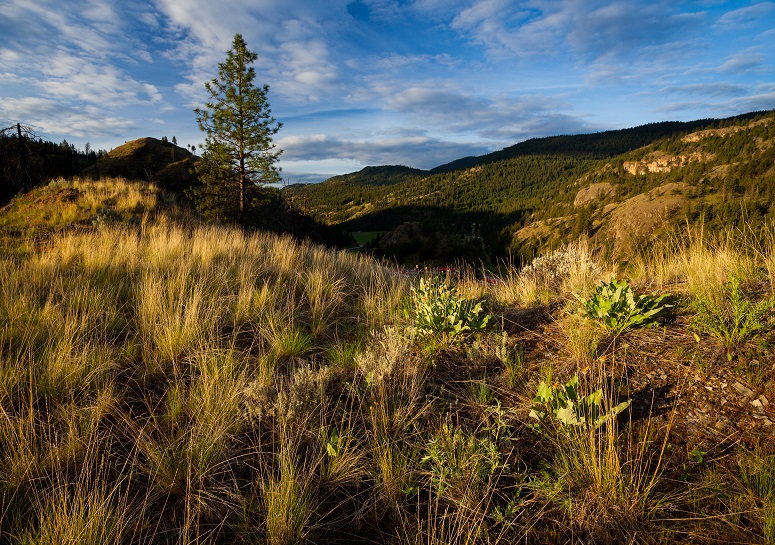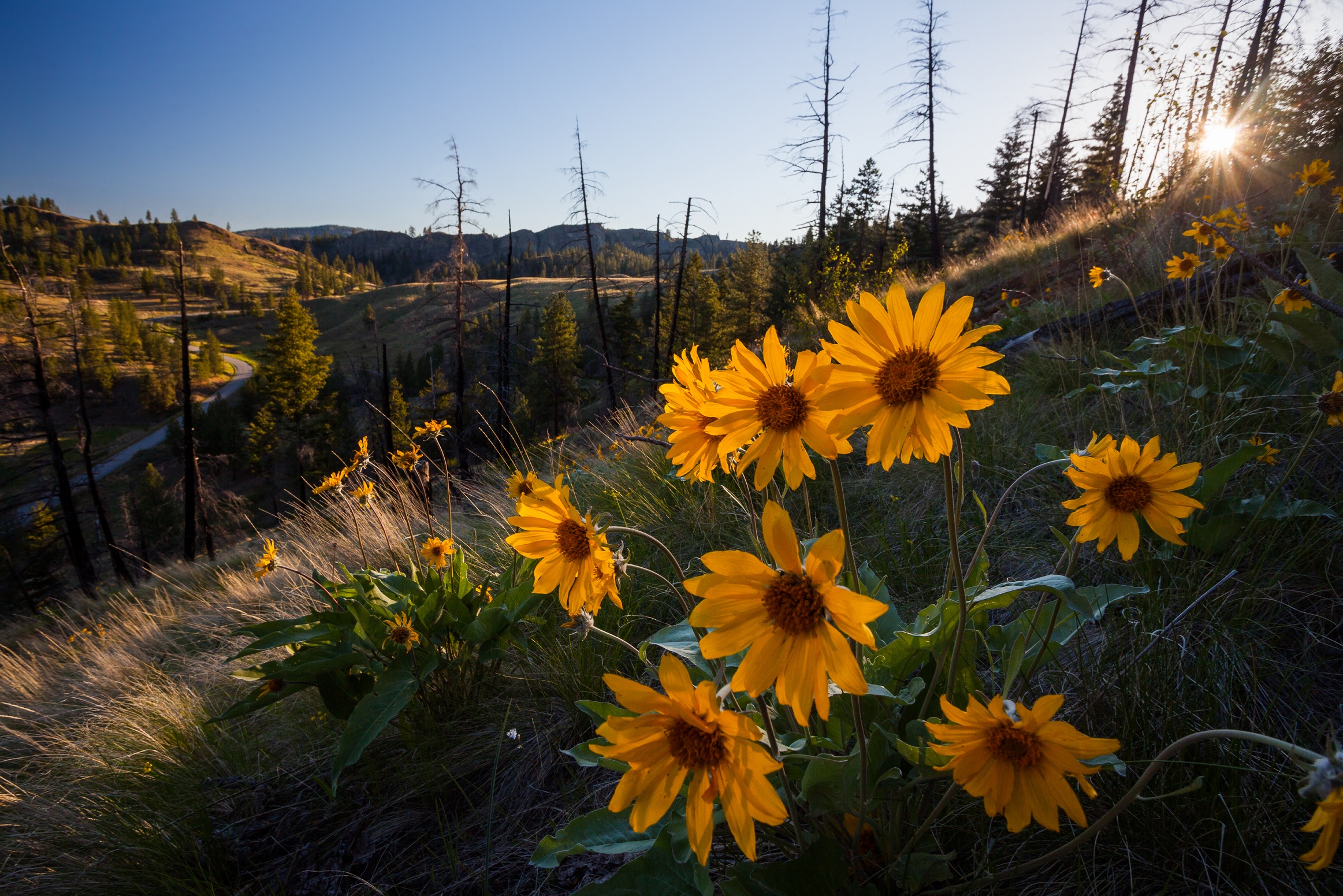This land preserves habitats for species at risk including the Lewis’s Woodpecker, Peregrine Falcon, and Western Screech Owl
The Nature Trust of BC, a leading non-profit land conservation organization, announced today that, with the help of donations from conservation-minded individuals, 61 hectares (151 acres) of ecologically important land, known as the Park Rill Floodplain, will be added to the White Lake Basin Biodiversity Ranch conservation complex in the South Okanagan. Connectivity of habitats is critically important for fostering biodiversity, so the conservation of this property will add to the resilience of wildlife in the ecosystems all around.
The native grasslands of the South Okanagan are a hotspot for biodiversity, hosting a huge number of BC’s at-risk species. But, grasslands are also one of the rarest land cover types in BC covering less than 1% of BC’s land base, with few intact swaths of open plains remaining.
Located approximately 3 km northwest of the community of Willowbrook within the Regional District of Okanagan-Similkameen, the Park Rill Floodplain property supports many species of conservation concern and provides critical habitat for federally listed species at risk. The Lewis’s Woodpecker (listed as threatened under SARA Schedule 1) is at-risk from the loss of its nesting habitat in Ponderosa Pine forests.
With its diversity of ecosystems, Park Rill Floodplain is home to many other birds that are a conservation concern, from the BC Red-listed Peregrine Falcons (SARA Schedule 1 – Special Concern) that stalk the daytime skies, to the Blue-listed Western Screech Owls (SARA Schedule 1 – Threatened) that hunt in the night.
“Through the ongoing support and generosity of our partners and donors, we are delighted that Park Rill Floodplain will be added to the White Lake Basin Biodiversity Ranch Complex. Park Rill Floodplain protects additional critical habitat for species at-risk and helps sustain a viable biodiversity ranching operation. Expanding this Nature Trust conservation complex will play a vital role in maintaining habitat connectivity and ecological resiliency.” says Nick Burdock, Okanagan Conservation Land Manager.

Birds aren’t the only creatures to inhabit the natural landscape of Park Rill Floodplain. Endangered American Badgers burrow under the ground, while at dawn and dusk the Nuttall’s Cottontail can be seen through the underbrush. The smallest species of rabbit in BC, Nuttall’s Cottontail is a special conservation concern because of the loss of its grassland habitat. Black bears wander the rich meadows and in winter, Mule Deer migrate down from the heavier snow of higher elevations to feed on leaves, twigs, and shrubs in the low-lying grasslands of Park Rill Floodplain. Along with these mammals, there are at-risk amphibians and reptiles like the Western Tiger Salamander, Great Basin Spadefoot, Great Basin Gopher Snake, and Western Rattlesnake.
It is difficult to find low-land habitats unaffected by development, but three quarters of Park Rill Floodplain remains in a relatively natural state, allowing it to support six sensitive ecosystems: sagebrush steppe, open coniferous woodland, seasonally flooded fields, wet meadow, sparsely vegetated rocky outcrops, and importantly, grasslands. The remaining area is a cultivated floodplain surrounding Park Rill Creek, however with the conservation of this land by The Nature Trust of BC, it can be restored to a natural state.
“The diversity of species and habitats protected by this project exemplifies the importance of the native grasslands within the South Okanagan. The Nature Trust of BC has a sterling track record for protecting, managing and restoring these and other critical habitat types in BC. For that reason, the Habitat Conservation Trust Foundation is a proud funding partner of the Nature Trust and of our shared goals of conserving fish, wildlife and their habitats through the protection and conservation of BC’s natural landscapes.” – Dan Buffett, CEO of the Habitat Conservation Trust Foundation.
With the conservation of Park Rill Floodplain, the home of these species and many more are protected in perpetuity. Expanding the protected areas within Okanagan grasslands will serve to maintain its rich biodiversity for generations to come.
The Nature Trust thanks landowners and conservationists Ray and Jennifer Stewart who have cared for the land for 33 years.
This project was undertaken with the financial support of Environment Climate Change Canada, Habitat Conservation Trust Foundation, George Galbraith and Family, Val and Dick Bradshaw, and many individual donors.
Contributed by The Nature Trust of British Columbia







